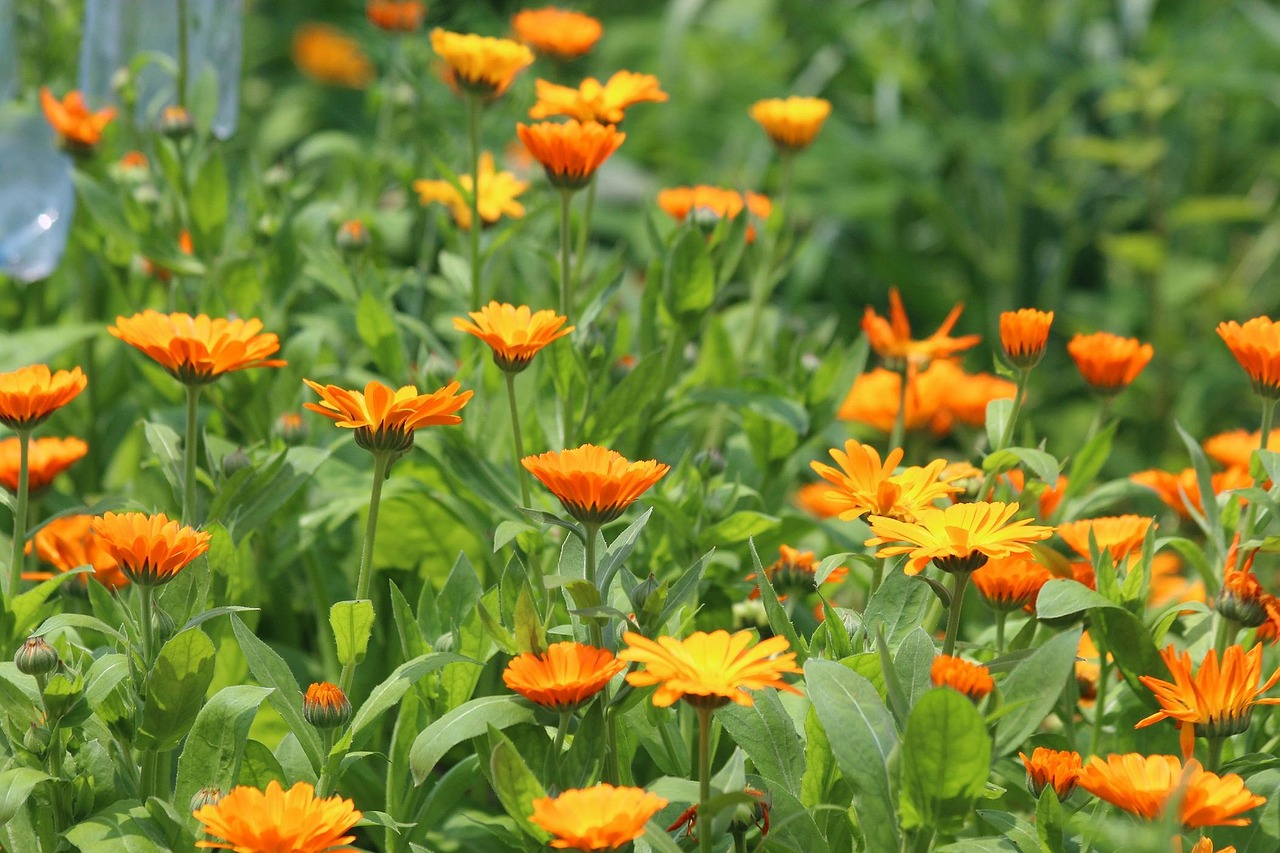
Calendula
Calendula officinalis
Basic Information
🌿 Family: Asteraceae🗺️ Zone: 2-11
Other Names:
- Pot Marigold
- English Marigold
🌡️ Ideal Temperature : 60°F – 70°F
🔥 Heat Tolerance: Up to 85°F
❄️ Cold Tolerance: Down to 25°F
🌱 Type: Annual
Layers
- Ground
Functions
- Edible
- Medicinal
- Pollinator
- Wildlife Attractor
- Pest Management
- Ground Cover
Pests
Description
Calendula (*Calendula officinalis*), commonly known as pot marigold, is a hardy annual herb native to southern Europe and the Eastern Mediterranean. It typically grows to a height of 30 to 60 centimeters (1 to 2 feet) and displays bright yellow to deep orange daisy-like flowers. The plant has lance-shaped, slightly hairy leaves and blooms profusely from early summer until frost. Calendula is well-suited to average, moderately fertile, well-drained soils in full sun but can tolerate some shade, especially in hot climates. It is known for its ease of cultivation and ability to self-seed under favorable conditions.
🌞💧 **Sun and Water Requirements:**
Prefers full sun exposure but can tolerate partial shade, particularly in hotter climates. Thrives in moderately fertile, well-drained soils. Regular watering is essential, especially during dry periods, to maintain consistent soil moisture without waterlogging.
✂️🫘 **Methods to Propagate:**
Propagated primarily through direct sowing of seeds in the garden after the danger of frost has passed. Seeds can also be started indoors 6 to 8 weeks before the last expected frost. Germination occurs within 5 to 15 days at temperatures between 15 to 20°C (59 to 68°F).
🧑🌾👩🌾 **When to Harvest:**
Flowers are harvested when fully open, typically in the morning after dew has dried. Regular harvesting encourages continuous blooming. Petals can be used fresh or dried for culinary and medicinal purposes.
Purpose
- Edible: Petals are edible and can be used fresh in salads or dried as a saffron substitute to color and flavor dishes.
- Medicinal: Traditionally used for its anti-inflammatory, antiseptic, and healing properties; commonly applied in salves and teas to treat skin irritations and minor wounds.
- Pollinator: Attracts bees, butterflies, and other beneficial insects, enhancing pollination in the garden.
- Wildlife Attractor: Provides habitat and food for various beneficial insects, contributing to ecological balance.
- Pest Management: Acts as a trap crop for aphids and attracts predatory insects like ladybugs and lacewings that help control pest populations.
- Ground Cover: Dense foliage suppresses weed growth and protects soil from erosion.